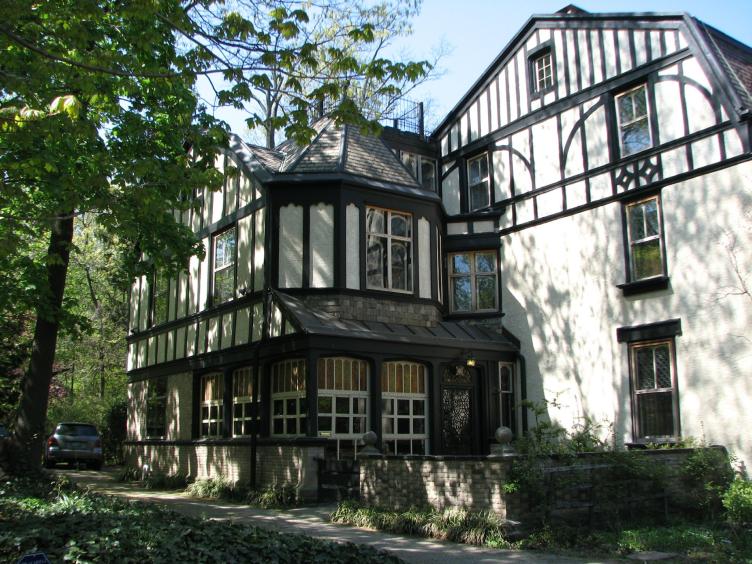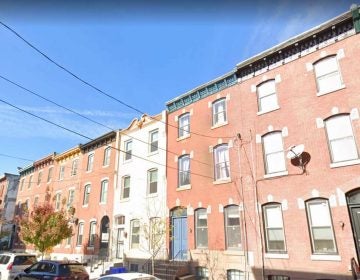New slate of historic designation recommendations

The homes of an artist and a boxer, a Horn & Hardart, a burial ground. The Philadelphia Historical Commission’s Committee on Historic Designation recommended that these properties — and another eleven — be added to the city’s historic property register at its meeting on Wednesday.
But it was a private home in Germantown, once the residence of George Pearson, a significant Philadelphia architect who practiced in the late 19th-century, that engendered the longest debate as the house’s current owner vigorously voiced his opposition to historic designation. After pointing out that the nomination itself was “full of errors” (including delineated materials, period of significance, and number of stories), the homeowner said that he personally objected not only because a designation might jeopardize his mortgage (a technicality which Historic Commission staffers — who have brought forth the nomination — said seldom if ever arises) but because “I want to maintain this property and it’s fundamentally unfair that I not be able to work on my home where I spend the lion’s share of my money and time.”
As the five Committee members present tried to suss out how the nomination might be corrected, the frustrated homeowner scoffed at being forced to fine-tune something that he didn’t want at all. Committee Chair Richardson Dilworth noted that the debate “got to the heart of a tradeoff” that frequently occurs: the balance between public and private interests. Although the home on Walnut Lane was not built by Pearson, his alterations bore aspects of his signature eclectism, said Committee member Jeffrey Cohen, an architectural historian at Bryn Mawr College who has been something of a Pearson booster. Even though the current homeowners, as well as others in the past, have made changes to the building, the fact that Pearson lived and worked on the building renders it eligible for historic preservation, said the Committee, which unanimously voted to send their recommendation of “yes” onto the Historic Commission.
The other 14 properties on yesterday’s list also received unanimous approval from the Commitee with minor questioning along the lines of quibbles about language and spelling errors. Cohen and fellow Committee member David Schaaf of the Philadelphia City Planning Commission, for example, chided a proposal for the 1917 A. Pomerantz building in Center City, notable for its early use of a glass curtain wall, as possessing “muddied content” and prey to “over-claims.” And, when Committee member Bruce Laverty, the curator of the architectural collection at the Athenaeum, questioned the characterization of a Horn & Hardart as a “watering hole” — saying he understood that term to be more appropriate for a “tavern” — fellow Committee member Janet Klein, former chair of the Pennsylvania Historical and Museum Commission, said dryly, “I think of it as a place for elephants.”
In addition to the Pomerantz building and the Horn & Hardart building, designed by Steele and Sons (architects of Shibe Park and early skyscraper builders in the vein of the more renowned Cass Gilbert, Louis Sullivan,and Daniel Burnham), the nominations included the Chinese Cultural and Community Center in Chinatown, an old rowhouse transformed in the 1960s into a facsimile of a Mandarin palace; the Bethel Burying Ground at what’s known today as Weccaccoe Playground in Queen Village; and an exciting discovery, nominated by the Historical Society of Frankford: a Colonial-era house built in the early 1700s that Committee member Douglas Mooney of the Philadelphia Archaeology Forum noted might contain Native American artifacts on its property.
Laverty said he was pleased to see that several nominations concerned “cultural merit.” These included Joe Frazier’s Gym on North Broad Street (fresh from being named a “national treasure”); the North Philadelphia home of Dox Thrash, a Depression-era African-American artist; the Stiffel Senior Center, a Jewish community center in South Philadelphia; and Shofuso, the Japanese House and Garden in Fairmount Park.
The lengthy meeting concluded with the Committee recommending that a requested rescission be granted in the Spring Garden HIstoric District, after coming to the conclusion that the applicants’ contention that the district had been mapped incorrectly in the first place. The building under question is a single-story, mid-19th-century warehouse whose owners are looking to demolish it to redevelop the site into four single family homes.
WHYY is your source for fact-based, in-depth journalism and information. As a nonprofit organization, we rely on financial support from readers like you. Please give today.






